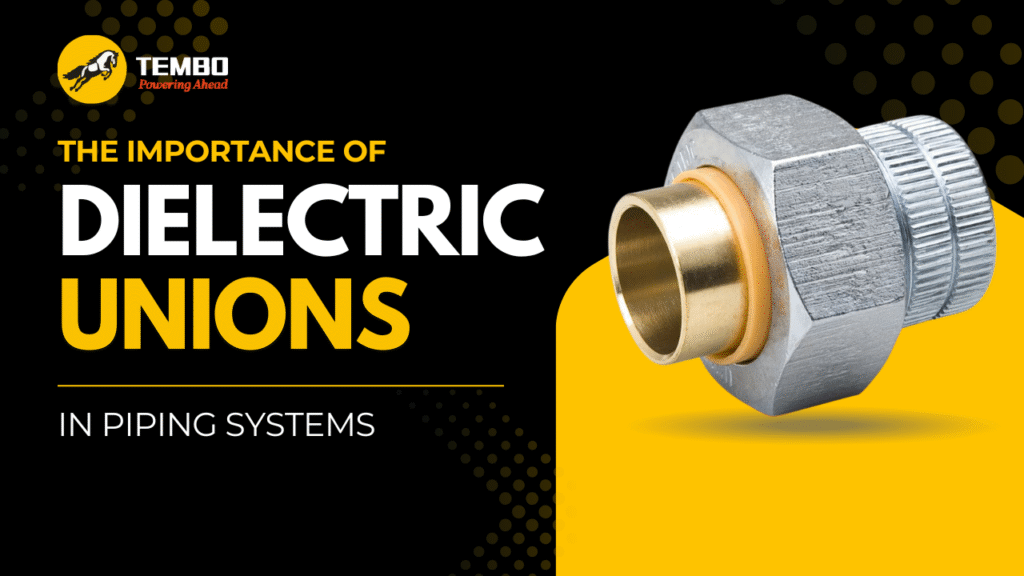
In piping systems, one small but critical component can make a huge difference in system longevity: the dielectric union. Whether in residential plumbing, commercial HVAC, or complex industrial setups, these fittings help prevent a silent but destructive issue—galvanic corrosion. This blog will unpack what dielectric unions are, why they matter, the types available, and how proper use ensures the reliability and safety of piping systems.
Table of Contents
What Is a Dielectric Union?
A dielectric union is a specialized pipe fitting designed to join two dissimilar metals—like copper and galvanized steel—while preventing direct contact. It uses an internal insulating insert, typically made of plastic, rubber, or nylon, to interrupt electrical conduction and protect the integrity of the piping system.
Why Dielectric Unions Are Essential
Preventing Galvanic Corrosion
The main purpose of dielectric unions is to halt galvanic corrosion—a process where two different metals in contact, often through water or another electrolyte, create a small electric current. This damages the less noble metal over time, leading to leaks or system failure.
Code Compliance and Safety
In many building codes, especially around water heaters or plumbing systems with mixed metals, dielectric unions are required to ensure safe, long-lasting connections.
Extending System Lifespan
Between ensuring corrosion resistance and providing a clean barrier between different metals, dielectric unions significantly extend system durability. Ready replacements also mean less downtime during maintenance cycles.
Types of Dielectric Unions
There are several models of dielectric unions tailored to different environments and use cases:
| Type | Materials Used | Applications |
|---|---|---|
| Standard Dielectric Union | Brass + Plastic insert | Residential plumbing (e.g., copper to steel) |
| Heavy-Duty Dielectric Union | Stainless steel + Nylon | Industrial systems requiring durability |
| Dielectric Nipples | Copper + PVC insert | Water heaters and HVAC systems |
| Specialty Unions | Custom composites | Outdoor, freeze-prone, or bespoke installations |
| High-Performance Unions | Epoxy or advanced coatings | High-pressure, corrosive, or critical systems |
Installation & Maintenance Best Practices
To maximize effectiveness:
- Proper Sizing: Match the union to the exact pipe dimensions for tight, effective bonding.
- Seal Integrity: Use recommended gaskets or O-rings to prevent leakage around the union.
- Follow Manufacturer Guidelines: Each union typically includes details on pressure rating, torque, and acceptable temperatures.
Maintenance Tips:
- Inspect joints regularly for corrosion or misalignment.
- Replace unions that show signs of wear before they compromise system integrity.
Real Insights from Field Experience
On forums like Reddit, professionals often discuss real-world dielectric union issues:
“Dielectric unions are code in the IPC… However, brass is often used as a more durable alternative.”
Others report installation or quality issues:
“After a few months, corrosion appeared—likely due to improper installation or overtightening.”
These accounts highlight that, while dielectric unions are crucial, installation quality matters just as much as the product itself.
Conclusion
In the fight against galvanic corrosion, dielectric unions stand as a highly effective solution. By creating a non-conductive barrier, they protect dissimilar metals from electrochemical damage, comply with safety codes, and boost piping longevity.
Whether you’re working on plumbing, HVAC, or high-performance industrial systems, dielectric unions—when correctly selected and installed—are essential for durable, reliable piping systems.


